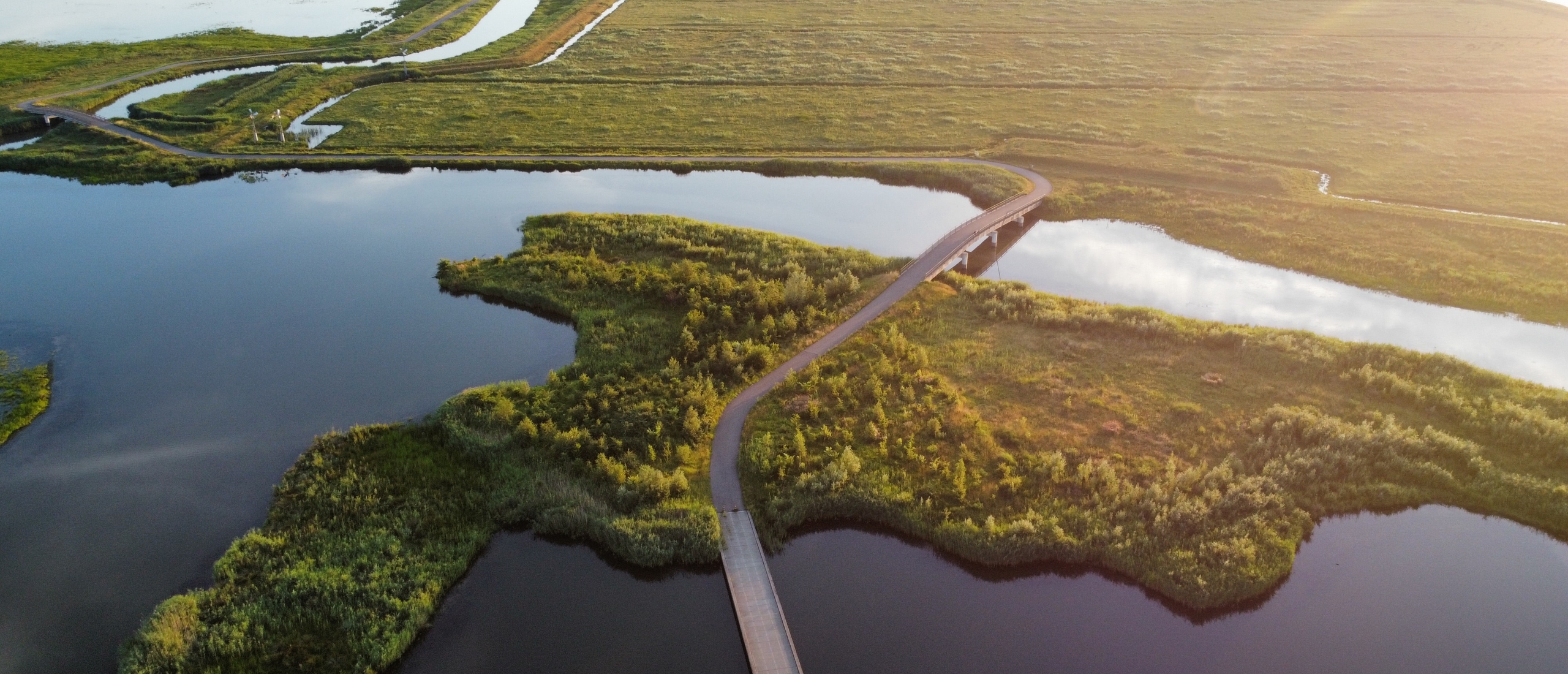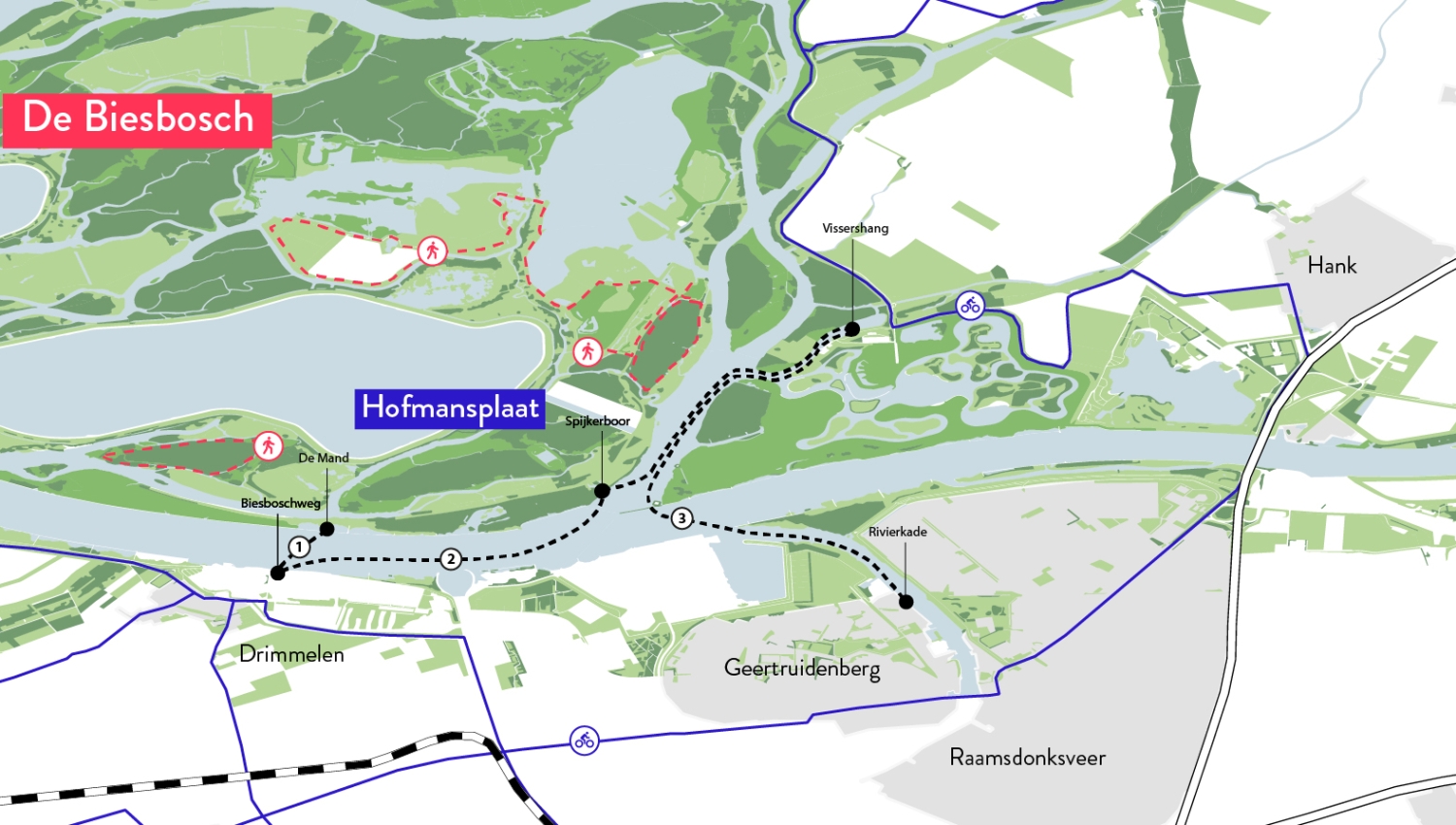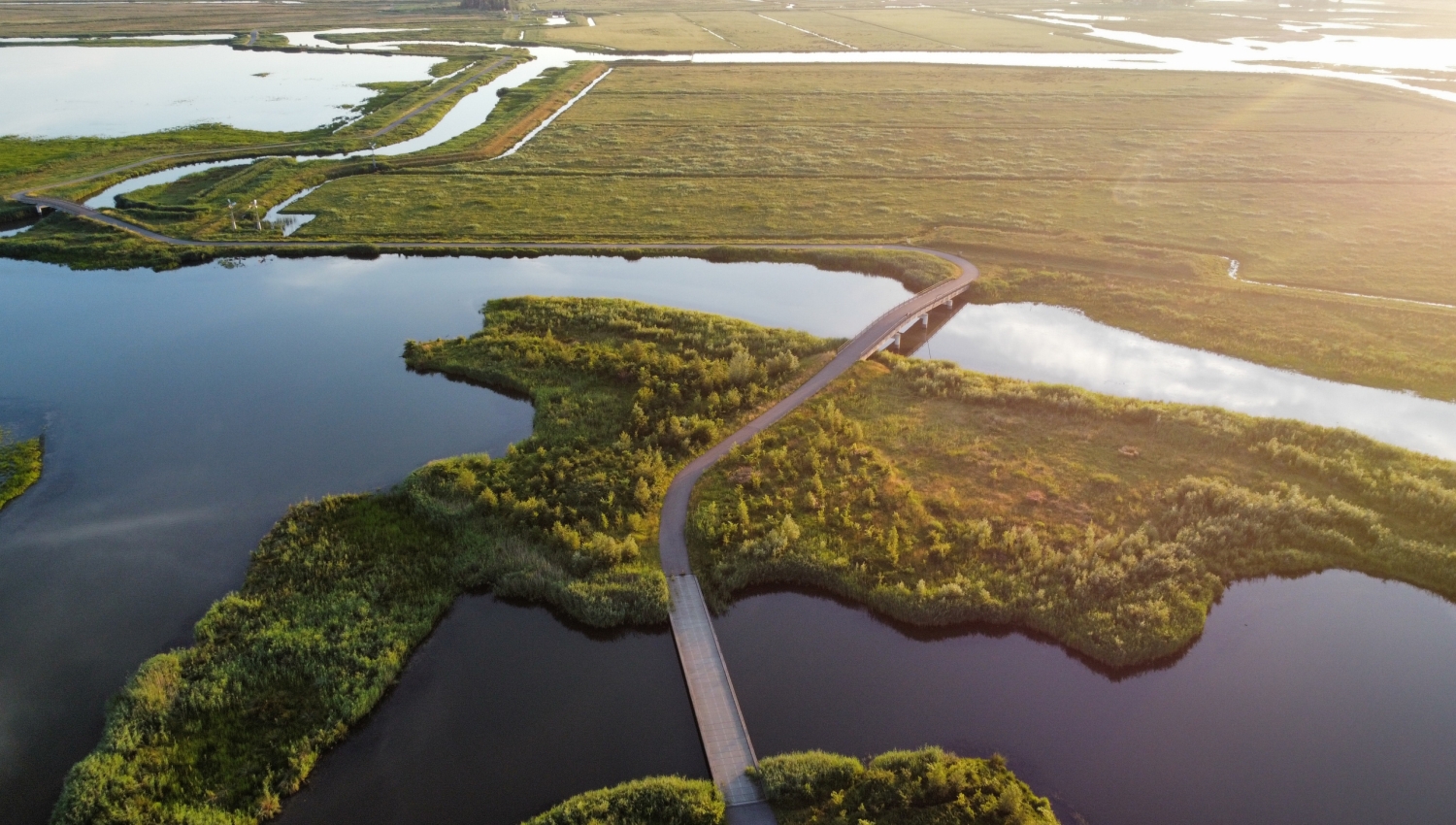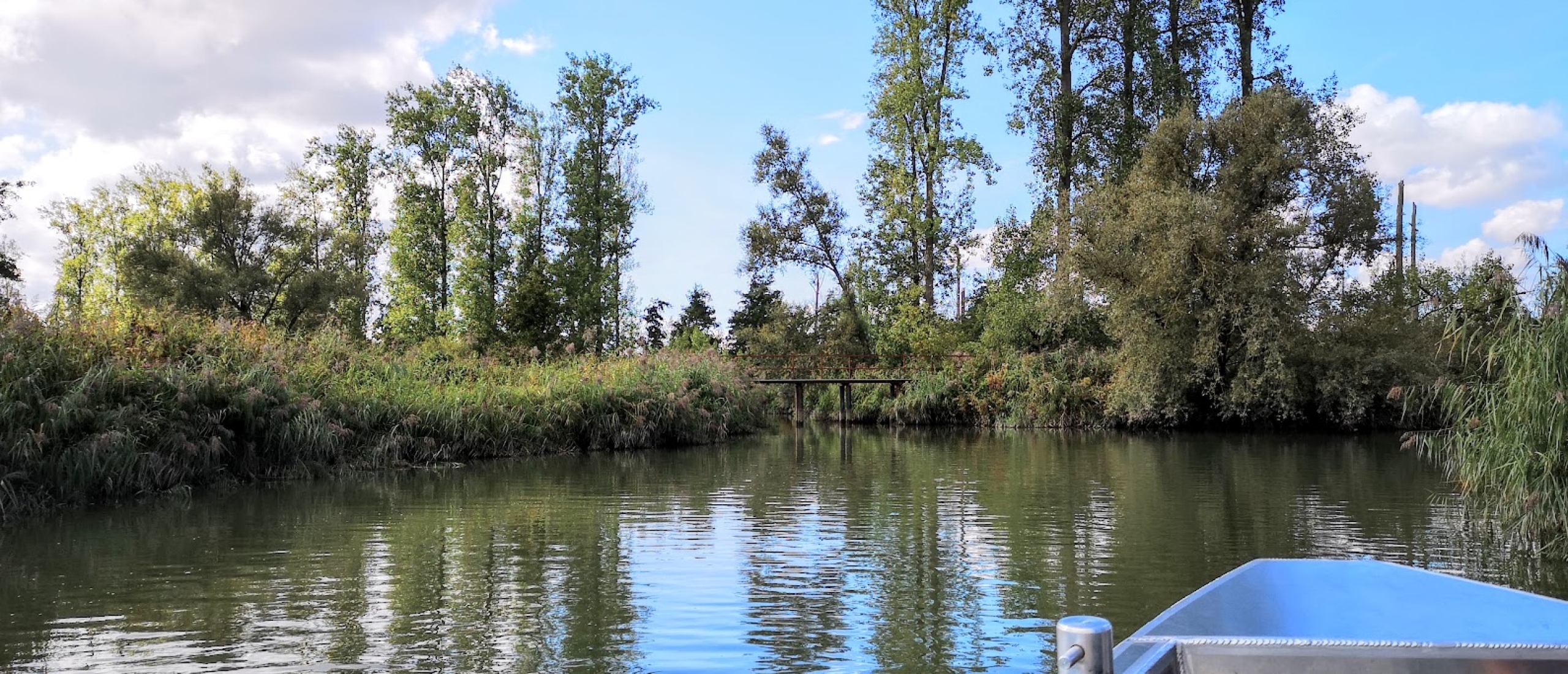
Biesbosch Triangle Ferry Route
A feasibility study into a potential permanent ferry route between the three Brabant municipalities Altena, Drimmelen, Geertruidenberg and the Biesbosch.
Read moreThree Brabant municipalities – Altena, Drimmelen and Geertruidenberg – see potential in a triangular ferry route connecting them to De Biesbosch National Park. BLOC carried out a feasibility study into a potential permanent ferry route.
This ferry route would realise an ambition that has been around for a long time. Namely, opening up of that part of De Biesbosch located in North Brabant and connecting it to the part in South Holland. This ferry route would have the added value of connecting to existing infrastructure, creating many wonderful connecting cycling and walking routes in De Biesbosch. Moreover, it would allow visitor flows to be managed and distributed, so that vulnerable areas could be spared.
This is a purely conceptual drawing. The routes and mooring sites have not yet been determined.

Background
BLOC previously conducted a feasibility study into a ferry route between Drimmelen and Hofmansplaat. Despite a lot of enthusiasm for the plan from the Drimmelen municipality and the Dutch Forestry Commission, the project proved unfeasible. The island’s fragility and the resulting need to restrict visitor numbers meant that there was not a viable business case for a commercial ferry route. We have now come up with a possible alternative: the triangular ferry route.

Motivation behind the Triangular Ferry Route
We think that the triangular ferry route has a lot of potential. A ferry route of this sort would strengthen the ties between the De Biesbosch municipalities in Brabant and the rest of De Biesbosch. It would create a regional network of walking and cycling routes linking mainland Brabant with De Biesbosch and the Northern Biesbosch situated in South-Holland.
Moreover, it’s a much more realistic business case. It would be able to carry far greater passenger numbers. As a result, larger ferry organisations with sufficient capacity are likely to be interested in providing the service. This would improve the prospect of long-term continuity.
The supply created in this way would meet a market demand by tourists wanting to cover significant distances, predominantly by bike, and for whom nature is a major motive for visiting. The ferry route would connect to existing cycling and walking routes and would therefore use existing infrastructure. This would allow visitor flows to be well managed, sparing fragile nature.
In brief, this is an opportunity to make De Biesbosch National Park even more accessible to leisure walkers and cyclists, combined with the addition of the new experience that passenger transport across water would provide.
MORE INFORMATION? GOT A MOBILITY QUESTION? CONTACT FRED!

Fred Witte
- fred@bloc.nl
- +31 6 16 21 67 79

